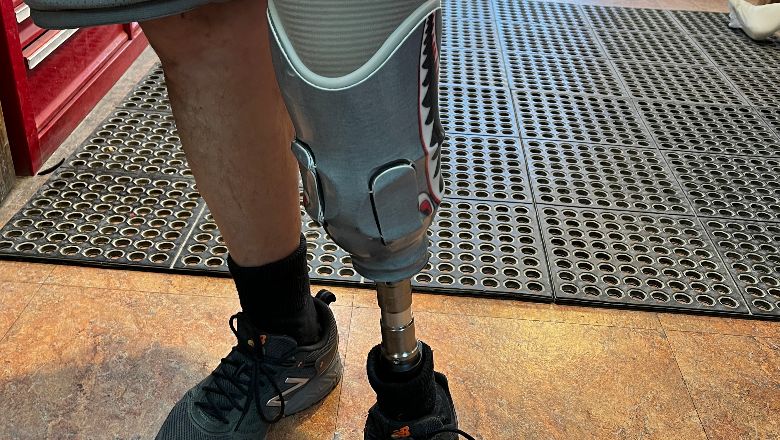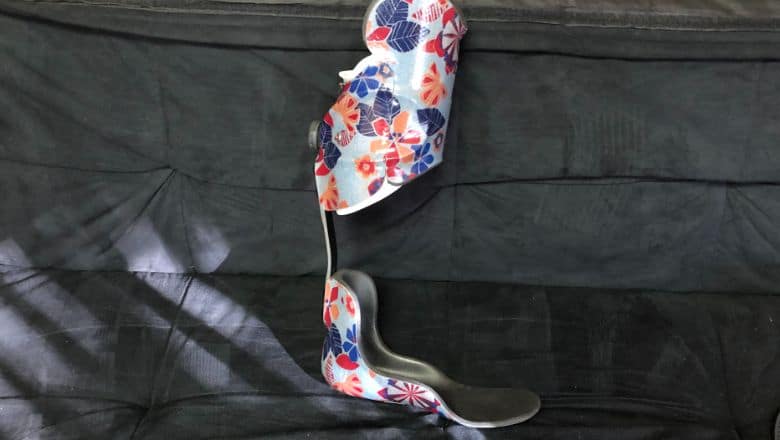Getting your first prosthetic limb is a major step forward in your recovery and independence. Whether you’re navigating life as a new amputee or supporting a loved one through the process, it’s completely normal to have questions. The good news? Prosthetic technology has come a long way. Today’s custom prosthetics are more advanced, more comfortable, and more adaptable to your lifestyle than ever before.
At Evolve Prosthetics & Orthotics, we believe that with the right support and information, the prosthetic rehab process can be empowering.
Life After Amputation Starts With Healing
The journey toward getting your first prosthetic limb begins with one essential step: healing. After amputation surgery, your body needs time to recover physically and emotionally before entering the prosthetic limb fitting process.
- Your care team will focus on preparing your residual limb for prosthetic use.
- This step involves monitoring incision healing, managing swelling, and helping shape the limb using compression garments.
- It’s normal for your limb to change shape during this time, which is why fitting a permanent prosthesis too soon isn’t recommended.
Healing lays the groundwork for everything that follows – from your first prosthetist appointment to learning how to walk or move with your custom prosthetic. With patience, persistence, and support, this phase sets you up for long-term success in your prosthetic rehab process.
Pre-Prosthetic Training
Before receiving your first prosthetic limb, your care team will guide you through pre-prosthetic training. This is the ideal time to meet with your prosthetist, who will assess your limb, ask about your lifestyle and goals, and begin crafting a custom prosthetic treatment plan tailored to your needs.
- Managing Swelling With A Compression Sock, Rigid Removable Dressing (RRD), Or Shrinker
- Strengthening Key Muscle Groups
- Preventing Contractures Through Targeted Exercises
- Focusing On Skin Health
- Desensitization Of The Residual Limb Using Gentle Massage & Tactile Stimulation
The Prosthetic Limb Fitting Process
Once you’re ready, your prosthetist will evaluate your limb, take measurements, and begin the casting process for your custom prosthetic. This stage is essential for refining fit and performance before crafting your definitive prosthesis.
- A mold will be taken to capture the unique contours of your limb to ensure your custom prosthetic fits securely and comfortably.
- A temporary (or “preparatory”) prosthesis allows your care team to make sure everything fits well as your limb shape stabilizes.
- Your temporary limb uses a test socket that allows you to start getting used to the feel of a prosthesis while practicing basic movements and weight-bearing.
- Your prosthetist will carefully monitor the socket’s comfort, alignment, and function, making adjustments along the way.
Crafting The Final Prosthetic Limb
Based on your feedback and experiences with the test socket, your prosthetist will custom-build your final prosthesis. This phase focuses on optimizing comfort, cosmetic appearance, and functionality – whether you’re getting a prosthetic leg or an upper-limb device. Every component is selected with your lifestyle, goals, and physical needs in mind.
- Myoelectric Arms
- Microprocessor Feet & Knees
- Above-The-Elbow Prosthetic Arms
- Pediatric Prosthetics For Kids
- Knee Prosthetics
- Prosthetic Hands & Artificial Wrist Joints
- Above-The-Knee Prosthetic Legs
- Ankle Prosthetics
- Prosthetic Foot
Fitting Your First Prosthetic
During the fitting of your final limb, we’ll focus on dynamic alignment – fine-tuning the device to match your natural gait and movement patterns. You’ll also receive gait training (for lower-limb prosthetics) or upper limb control training (for arm or hand prosthetics) to improve strength, coordination, and confidence in daily tasks.
Fine-Tuning & Physical Therapy
Your journey doesn’t end once the prosthesis is in place. In fact, adjusting to a prosthetic involves continued therapy and support. You’ll work with your physical therapist to build strength, improve balance, and master your new movement mechanics. During this time, expect more fine-tuning.
Comfort Is Key – Prosthetic Limb Adjustment & Fit
When it comes to prosthetic comfort and wear, fit is everything. During your follow-up prosthetist appointments, we’ll make necessary adjustments to ensure your prosthesis feels like a natural extension of your body. Small tweaks during the first few weeks are normal. Your limb is still healing, and your mobility is evolving.
This phase is about listening to your body. A proper fit should never cause pain, excessive pressure, or skin breakdown. Our goal is to provide custom prosthetics for beginners that fit seamlessly into your daily routine.
Learning To Move With A Prosthetic
Adjusting to a prosthetic is both a physical and mental process. Most patients work closely with physical therapists who specialize in amputee rehab. You’ll learn how prosthetics work, how to move with your new limb, and how to improve balance and stability over time. It’s okay if things feel challenging at first. Every person progresses at their own pace.
Celebrating small victories – like taking your first steps, walking longer distances, or standing without assistance – builds confidence and marks real progress.
Navigating The Emotional Adjustment After Amputation
Getting your first prosthetic limb isn’t just a physical adjustment, it’s an emotional one too. Many people experience a range of feelings, from anxiety to hope to frustration. This is all part of the emotional adjustment after amputation. Talking with a support group, counselor, or peers who’ve been through the prosthetic rehab process can help.
Living Fully & Independently With A Prosthesis
Once you’ve adapted, life with a prosthesis opens new possibilities. From returning to work or sports to engaging in hobbies and travel, your prosthetic is designed to support your lifestyle – not limit it. Good prosthetic limb care is part of that success. Daily cleaning, occasional maintenance, and knowing when to schedule a check-in with your prosthetist help extend the life of your device and keep you moving comfortably.
Life With A Prosthesis – Tips for Long-Term Success
Living with a prosthesis means adopting new routines, staying active, and prioritizing your overall health. Here are a few expert tips for new amputees to enhance your long-term experience.
- Be Patient & Persistent: Progress takes time. Stay consistent with your therapy and practice.
- Embrace Physical Therapy: It’s a vital part of the prosthetic rehab process and long-term mobility.
- Keep Communication Open: Share any discomfort or concerns with your care team early.
- Prioritize Skin Care: Daily cleaning, inspection, and moisturizing help prevent irritation or infection.
- Manage Pain Proactively: From phantom pain to socket pressure, don’t suffer in silence – your care team can help.
- Stay Active: Exercise helps strengthen your residual limb and supports emotional wellness.
- Adjust Your Environment: Small home changes or adaptive tools can make daily life easier.
- Seek Support: Connect with support groups, therapists, or peers who understand your journey.
Common Questions First-Time Users Ask
Everyone is different, but most people adjust within a few weeks to a few months, depending on their health, activity level, and support system.
As the Amputee Coalition states, you will need to learn to not only to trust your prosthesis, but re-learn things like balance and coordination. This can take some time to feel natural again.
Your prosthesis should feel snug and supportive, not painful. If something doesn’t feel right, reach out for an adjustment.
Minor skin changes can happen early on. We’ll work with you to improve fit, modify liners, and ensure healthy limb skin.
Begin Your Journey With A Prosthetic Limb In Las Vegas?
Adjusting to your first prosthetic limb is a process, but you don’t have to go through it alone. At Evolve Prosthetics & Orthotics in Las Vegas, we specialize in guiding new amputees through every stage, from your initial prosthetist appointment to long-term mobility success. If you or a loved one is preparing for life with a prosthesis, let us help you take the next step with confidence.
Contact us today to schedule a consultation and learn more about custom prosthetics for beginners.




